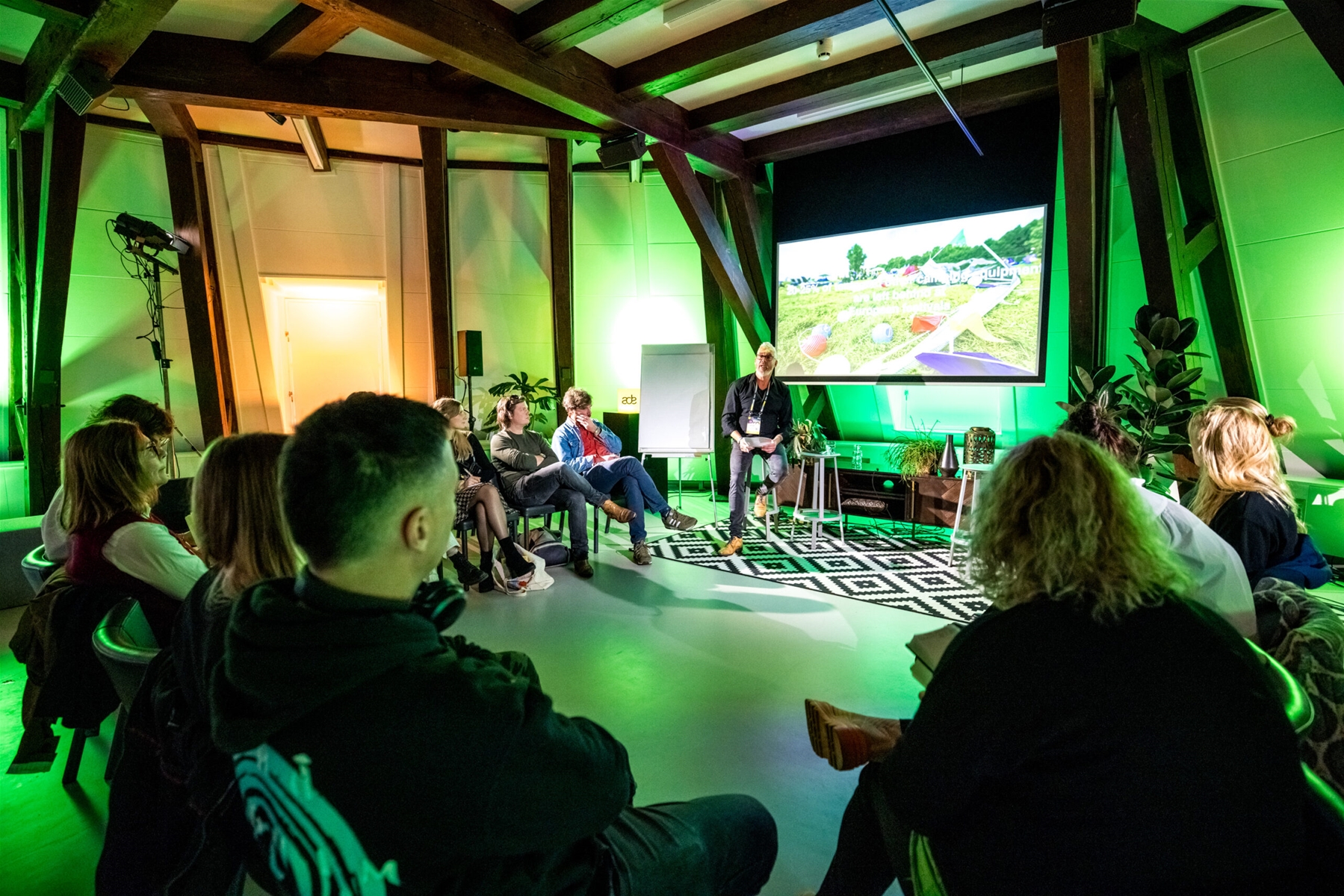This article was initially published by Green Events.
Plastic Promise’s main goal is to eliminate single-use plastics (SUP). Campsite waste includes a lot of single-use plastics. Even tents seem to be single-use on festival campsites. In fact, 20 to 25% of all tents and camping equipment are left behind at European Festivals.
OVAM research on campsite waste solutions
During the ADE Green session on campsite waste, Lore Claes, policy officer at OVAM (Flemish Public Waste Agency) shared with us the results of a recent Flemish research on campsite waste and materials. The report will be available later this year.
During the research a questionnaire was used to collect data from 2.000 Flemish festival participants. This research revealed that the main reasons for leaving behind tents or camping equipment are broken, cheap, bad quality, hard to demount or dirty/wet stuff.
The participants said to bring their own food and beverages to the campsite to avoid expensive purchases on the campsite. The main reason for this is to save money.
Solutions for prevention of waste in the OVAM report are on site repair services, group zones, rental service for tents and equipment, deposit systems for collection of material, offer of low waste food and beverage and smoking zones. Solutions to influence visitors' behaviours are on-site infrastructure, stewards and communication. OVAM wrote one-pagers for 6 selected initiatives:
- Communication
- Low-waste catering
- Green camping / group zones
- Party tents
- Rental of camping equipment
- Cigarette butts
And of course: we need commitment from the retail sector. Cheap, low quality tents, for example, are doomed to be left behind. Decathlon initiated a tent reuse and refurbish program so they could be an important stakeholder to tackle campsite waste.
Change management ingredients
The 3 main solution categories for tackling campsite waste are aligned with the 3 main change management ingredients:
- Technical / basic conditions
- Behavioural / communication
- Organisational
The most important take-away is the fact that a smart campsite design (technical) positively impacts visitors behaviours. This conclusion was already scientifically proven. For example, Groningen University found that people are more likely to follow rules in a clean and tidy environment. And the other way around, a dirty and chaotic environment provokes undesirable behaviour. So the (social and physical) environment is a behavioural nudge in itself.
Technical or basic conditions
Megan Best (Native Events, IL) shared her ideas on technical solutions. A campsite is the least managed area on a festival, she said. Megan mentioned the need for a better campsite design. In practice this means an orderly, structured campsite, with lots of free space, effective lighting, preferably preinstalled and high-quality tents and facilities (toilets, showers, waterpoints, waste depots, signage). As a practical rule of thumb, she mentioned a reduced number of campers per ha from 1.000 to 500 people.
Teresa Moore’s research (A Greener Future, UK) revealed that a green campsite ticket should be the default offer and it should not be more expensive than an ordinary campsite ticket. Teresa highlighted the need for a nice smelling campsite. A toilet block near the campsite entrance is not encouraging sustainable behaviour.
Other good practices: A good idea is to expand the green campsite area by making it a little bit bigger every year. An effective approach is to offer rental tents, coolboxes, camping chairs, tables etc.. Visual attractive food courts, waste deposit areas and camping shops help too.

Behavioural and communication
Let's move on to behavioural and communication aspects behind this issue. Megan explained the necessity of a complete regenerative culture and mindset of the event. So not to focus just on the campsite. An example of how to build a regenerative culture is to start with the first organisational team. This team pronounces sustainable values, attitudes and behaviours and therefore sparks the desired culture. Towards the event the team will grow and the culture will follow. If this is consistently managed, this regenerative team culture will affect the complete festival.
The importance of human contact with visitors is crucial. This could be by means of security, coaches, repair teams, stewards, ambassadors etc. Teresa’s research showed that a security team for the campsite increased visitors' willingness to book a green campsite. (In)direct contact with the performing artists is compelling (vlog, message, poster).
Teresa pronounced the power of a ‘green default’, so standard campsite tickets are green. The nudging information should start on the first website visit, at ticket sales, on the ticket, on the way to the event, etc.
An interesting concept is community hubs, which people can relate to. This could be food courts or waste deposits but also recognizable camping areas, f.i. a square tent structure, with shared tables and chairs or visitor self-made signs or pieces of art. People could sign-up a declaration of commitment for their area or think of a community name.
And last but not least, positive reinforcement of ‘good’ behaviours is a strong intervention. This could be done materially, by providing rewards (financial, tokens, free food or beverage, discounts, lotteries, extra’s). Or this could be done immaterially (compliment by security, coach, via app etc.). Make sure the feedback is positive. Of course a correction is sometimes necessary but keep the vibe positive.
The behavioural steps summarised:
- Physical nudging
A structured, clean, odourless campsite will evoke sustainable behaviours.
- Online nudging
Online contact moments can be used to issue sustainability messages (ticket, app).
- Social nudging
Crew behaviour sets an example for visitors behaviour. People tend to copy behaviours from authorities (security, stewards, artist).
- Information on consequences
Awareness of non sustainable choices can be developed by means of the right information.
- Information on actions
People have to know how to make the right choices and how to show the desired behaviours. So action oriented information is necessary.
- Positive feedback
Positive feedback reinforces desired behaviour.
Get involved!